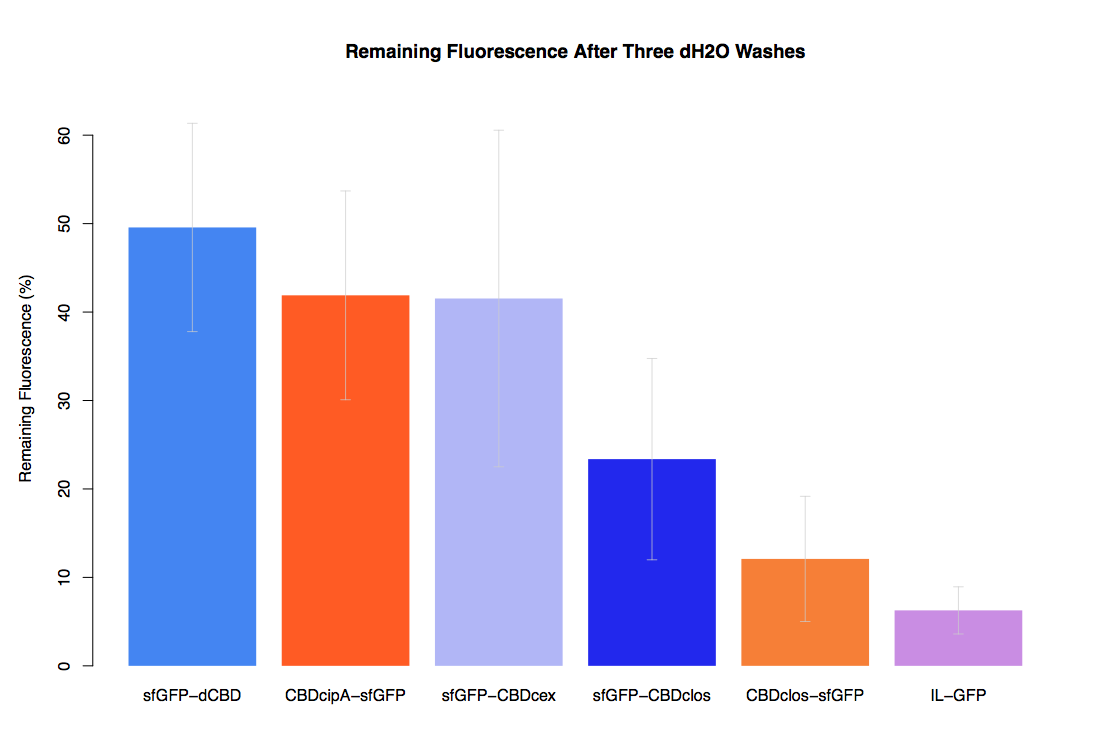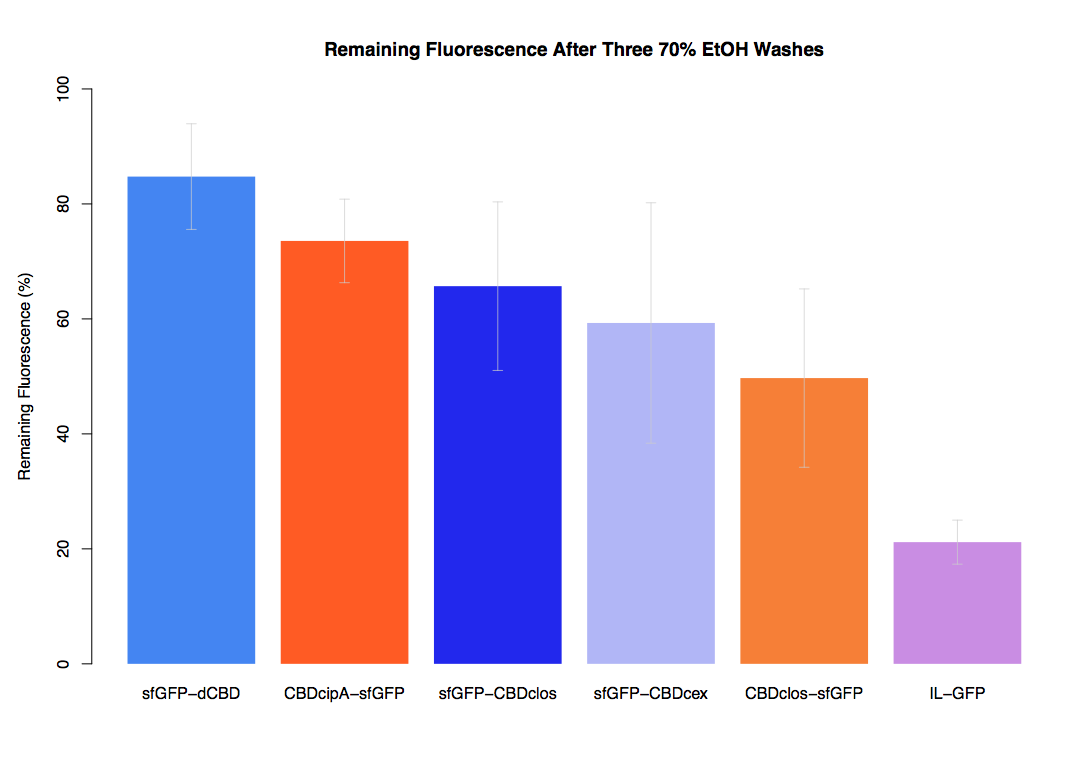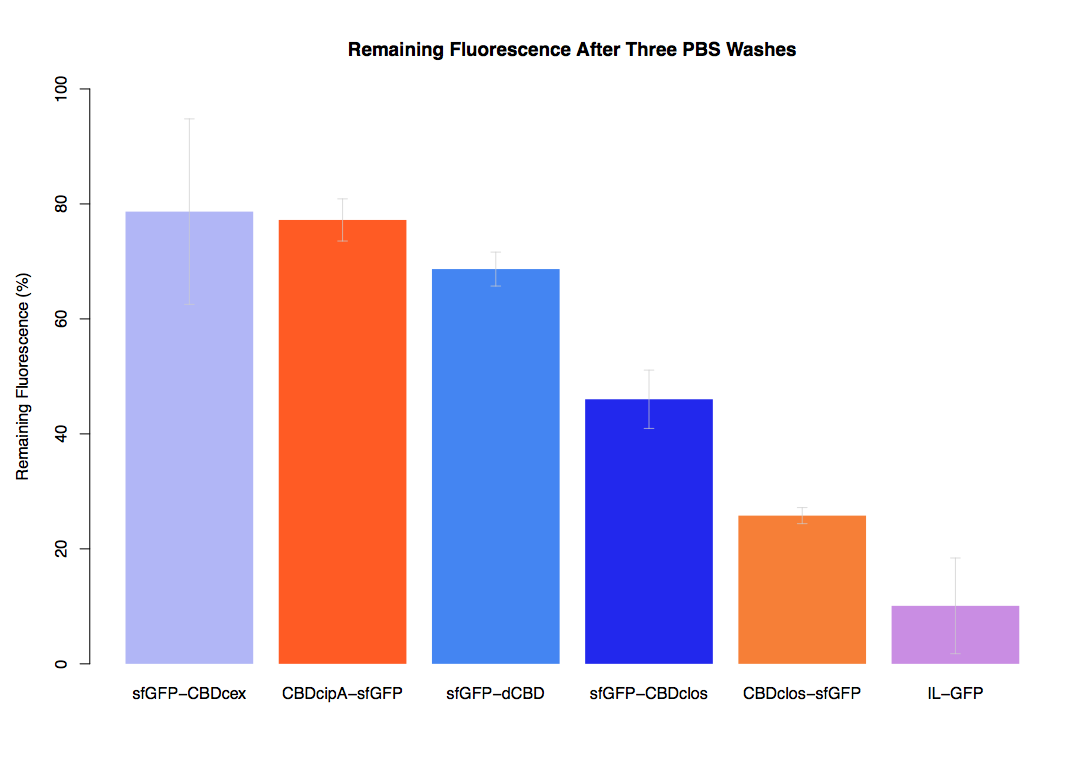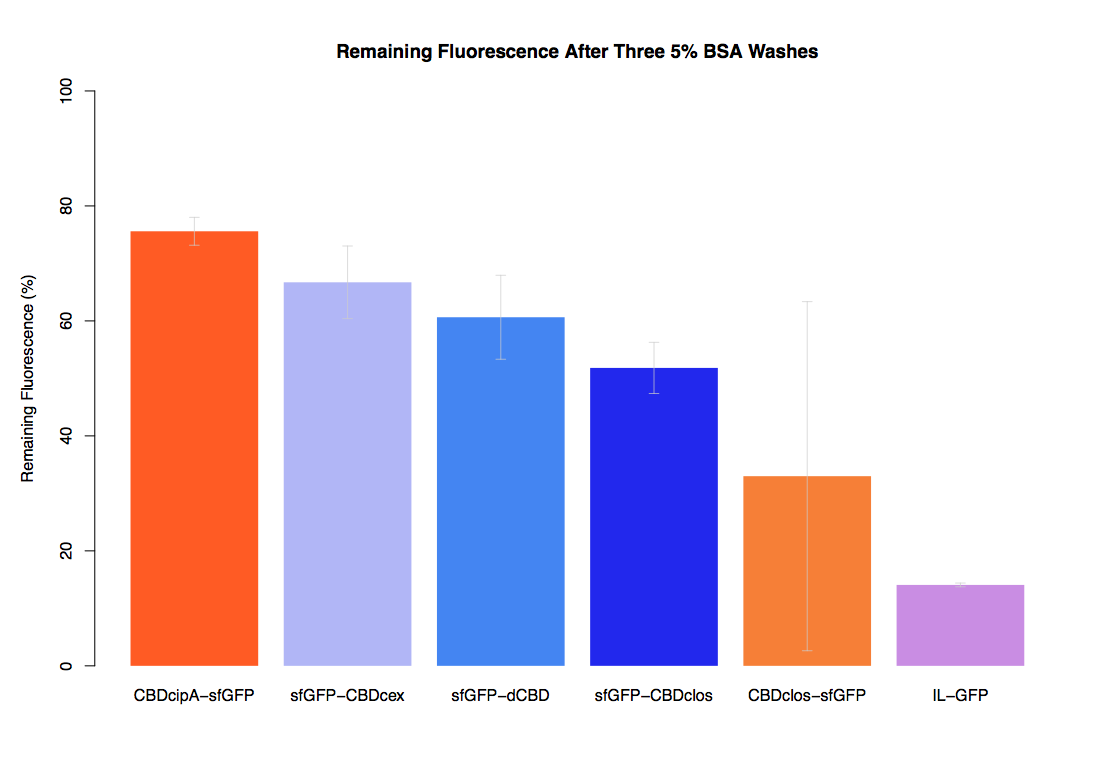Difference between revisions of "Part:BBa K1321346:Experience"
(→Applications of BBa_K1321346) |
(→Applications of BBa_K1321346) |
||
| Line 12: | Line 12: | ||
| + | [[File:IC14_-_dH2Obplot1.png|600px|thumb|left|Figure 1 - CBD-sfGFP binding strength assay after three ddH2O washes]] | ||
| − | |||
[[File:IC14-EtOHbplot1.png|700px|left|]] | [[File:IC14-EtOHbplot1.png|700px|left|]] | ||
Revision as of 04:35, 2 November 2014
This experience page is provided so that any user may enter their experience using this part.
Please enter
how you used this part and how it worked out.
Applications of BBa_K1321346
As part of our project we carried out an assay to determine the relative binding ability of CBD-sfGFP fusions to bacterial cellulose.
Our first assay was performed to determine the relative strengths of various CBDs’ binding to bacterial cellulose. These were represented by the percentage fluorescence left from CBDs fused to (sfGFP (RFC25)) bound to bacterial cellulose discs, when subjected to various washes. Full protocol can be found ([http://2014.igem.org/Team:Imperial/Protocols here])
It was determined that the fusion with CBDclos was, on average, our fourth strongest CBD, in comparison other CBDs tested, also fused to sfGFP.
User Reviews
UNIQ41e0b3189a0e5208-partinfo-00000000-QINU UNIQ41e0b3189a0e5208-partinfo-00000001-QINU




